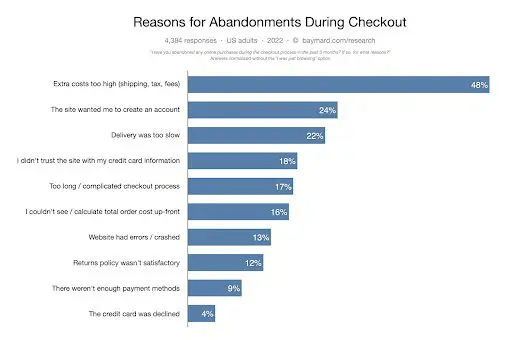The inaugural year for many B2B eCommerce entrepreneurs often mirrors a success story with notable achievements driven by stellar products, comprehensive market analysis, and a proficient team. Despite these initial triumphs, several eCommerce enterprises tend to face a slowdown and a sense of stagnation.
When encountering such scenarios, the instinctive reaction might lean towards expanding into new channels or inflating the marketing budget. However, optimizing existing touchpoints can yield substantial results for your business’s success without excessive resource allocation.
This guide dives into the potential benefits of Conversion Rate Optimization (CRO) for eCommerce businesses and explores pivotal CRO practices to not just meet but surpass your operation’s potential.
The Value of ECommerce CRO Investment
Incorporating conversion rate optimization into your eCommerce marketing strategy holds immense potential to bolster ROI and slash cost per acquisition. Furthermore, CRO operates within familiar marketing channels, enhancing its effectiveness.
Consider this practical illustration showcasing how CRO could notably elevate your business’s ROI:
Suppose you specialize in manufacturing components, with an average order value of $10,000, generating a 1% conversion from 500 unique monthly visitors. This translates to an average of 5 paying customers per month, resulting in $50,000 in revenue.
If half of your monthly traffic stems from PPC efforts, amounting to $25,000 in revenue, enhancing CRO by just one percentage point for your PPC landing pages could double this channel’s revenue to $50,000, marking a 50% overall revenue increase.
Preparing to Increase Your eCommerce Conversion Rate
Though diverse approaches cater to individual CRO goals, two fundamental preparatory steps significantly benefit all CRO endeavors:
Data Mining
Solid CRO necessitates reliable data for a comprehensive understanding of your site’s status and how modifications impact conversion rates. Utilize site analytics software, dedicated CRO suites like Hotjar, and other tools to commence CRO campaigns with insights into acquisition channels, audience demographics, and site user behavior detailed through reports.

Most eCommerce businesses have access to a vast array of data from various first, second, and third-party sources. To optimize your time and efforts, it’s advisable to organize customer data around specific marketing goals. Identifying these targets and considering how each category or metric contributes practically to these goals helps identify the most useful datasets while filtering out irrelevant ones.
Once data is organized and goals are established, you can better guide your CRO decisions and observe how each tweak to your marketing touchpoints influences outcomes.
Top-of-Funnel Optimization
Strengthen the top of your funnel for traffic acquisition to amplify on-site CRO actions. Strategies include reviewing paid channels, collaborating with industry leaders, and publishing problem-solving content. Assess and supplement tools supporting top-of-funnel performance, such as audience analytics, to ensure a robust flow of traffic.
4 CRO Best Practices for ECommerce Businesses
With analytics in place and optimized top-of-funnel activities attracting quality traffic, here are four paramount CRO best practices to amplify eCommerce traffic’s value:
1. Identify Obstacles in the Buyer Journey
Before introducing new features, scrutinize the buyer journey to identify obstacles hindering smooth conversions. Tools like Google Analytics reveal pages where potential customers drop off, offering insights to rectify specific pain points, such as a complicated checkout process or technical issues.
2. Optimize Checkout for Reduced Cart Abandonment
The checkout process presents a prime opportunity for early CRO campaign wins. Streamline the process by enabling autofill forms and transparent fee presentation to reduce cart abandonment caused by complexities.

3. Harness the Power of Video Content
Video content holds immense potential in improving CRO, as 81% of marketers report its direct impact on sales. Especially beneficial for complex B2B products, videos showcase product functionality, making it easier for visitors to understand features and applications. Despite being resource-intensive, integrating video content across Product Detail Pages (PDPs) promises substantial returns.
4. Highlight Tangible Benefits of Product Features
Link product features with tangible customer benefits, crucial in B2B eCommerce. Emphasize real-world applications on product detail pages, aiding customers in comprehending how features benefit them, and create dedicated sections showcasing product benefits, testimonials, and tailored brand copy for heightened conversions.
Closing Remarks
In the highly competitive eCommerce sphere today, designing an effortless user experience that captivates customers is of unparalleled importance. Irrespective of your product nuances and audience focus, we firmly believe that implementing these strategic insights and best practices will expertly steer you towards optimizing your customer journey and unleashing the complete potential of your online store.
Note: Content for this post was originally posted on Oroinc.com
Original content page: https://oroinc.com/b2b-ecommerce/blog/cro-for-ecommerce-business/






